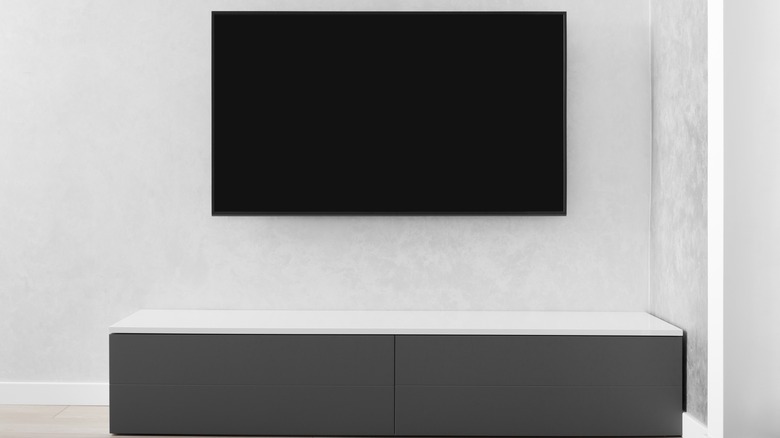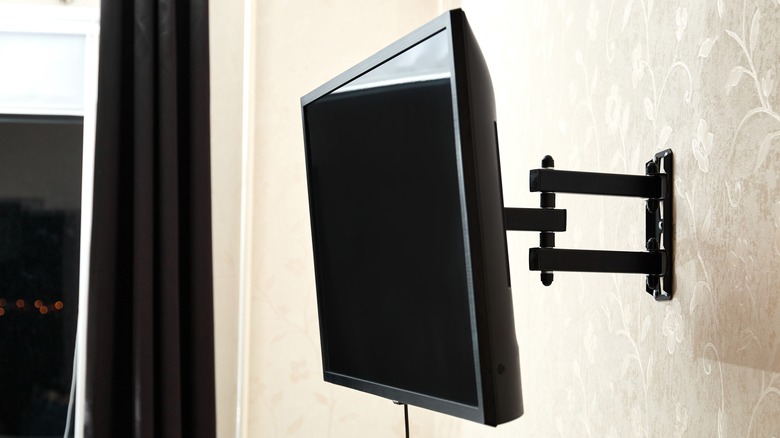LED Vs LCD TVs: What's The Difference & Is One Always Better?
We've been pretty definitively in the age of flat-screen displays for a couple of decades now, with just about every television and monitor in the average home now a flat rectangle instead of the chunky CRT boxes of eras past. However, the difference between retro box TVs and modern flat-screen displays isn't as simple as physical dimensions. Advancements in display technologies have spawned all manner of subtle variants and spin-offs in the flat-screen scene.
Two of the simplest variants of flat-screen displays, relatively speaking, are LCD screens and LED screens. Most flat-screen televisions below a certain price point and of a certain age utilize one of these two technologies to render your daily viewings in modestly good quality. While the top-shelf technologies like OLED and QLED displays have moved ahead of LCD and LED in terms of quality, if you're in the market for a simpler television, then one of these two display types should provide what you're looking for. The question is, what exactly sets these two technologies apart, and which one would look best in your living room?
LCD stands for liquid-crystal display, the default of flat-screen technology
Liquid-crystal displays, or LCD for short, are the backbone of the entire flat-screen boom, enabling displays to produce comparable or better levels of color and clarity than CRT TVs in a much slimmer package. LCDs have actually been around since the 1960s, but only really came into their own around the turn of the century.
As the name implies, a liquid-crystal display makes use of a myriad of tiny little crystals suspended in a liquid solution, which is then sandwiched between a couple of polarizing panels and placed in front of a backlight. The backlight turns on when the display is powered on, and as electricity passes through the liquid-crystal solution, the crystals either align or disperse. As the crystals align, different levels of light from the backlight are permitted to pass through, creating visible color. Align a whole bunch of those together in a tight group, and you've got enough little points of color to create a complete picture. LCDs typically get their backlighting from a cold cathode fluorescent lamp, or CCFL for short, though this particular bit of technology isn't as common these days.
LED stands for light-emitting diode, a more advanced form of LCD display
Light-emitting diode displays, or LED for short, are technically an offshoot of LCDs. Standalone LEDs have been around for decades; you've probably got a few appliances and lighting fixtures in your home that make use of them. LEDs in the specific space of displays, though, are a slightly different matter.
On its own, an LED is very simple: voltage is applied to a semiconductor diode, and it lights up. An LED display, meanwhile, combines this simple notion with the existing principles of an LCD. Rather than a single, overarching source of light from a CCFL, an LED display beams light from a large array of LED lights placed behind a liquid-crystal screen. It's the same basic concept, with light from the LEDs being beamed through the crystals to create color, but since there are so many individually functioning lights, you can create a much more vibrant, directed color image. By individually illuminating every little point on the screen, you can get a much deeper contrast, more vivid colors, and just generally a better picture.
LCD is a bit cheaper, while LED produces slightly better quality
By today's standards, standalone LCD and LED displays are about as simple as it gets. Most modern televisions from the big brands like Samsung or TCL have moved past both technologies in favor of things like mini-LED and OLED displays. That said, you can still find simple, smaller LCD and LED TVs, usually on the clearance shelf at your local big-box store or at a second-hand store. If you had to pick one, though, which one would it be?
Honestly, it depends on your price range. As LCDs utilize a simpler technology with a bit of a duller picture, you can get one for much cheaper than an LED display, probably around $100. An LED TV, as we've mentioned, provides a much deeper and more vibrant picture than an LCD TV, so it naturally costs a bit more, around $100 to $300 or more depending on the size. It is worth noting that standalone LCD TVs are fairly old, so even if they are cheaper, they may be harder to find, so you might need to spring for an LED TV either way. Even if it costs more, it's still cheaper than a super-duper ultra-definition display, so it's a good choice for something like a dorm room TV.



